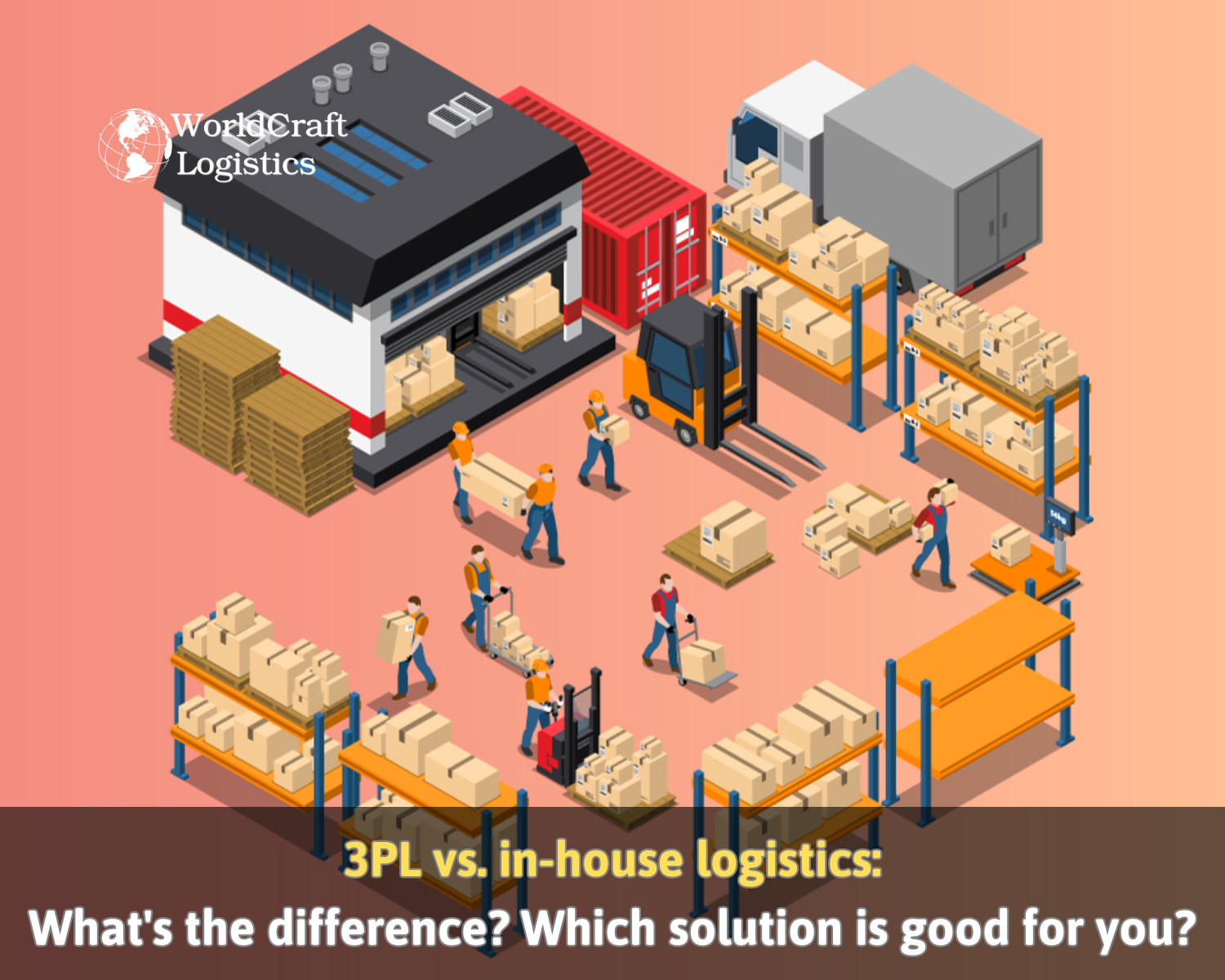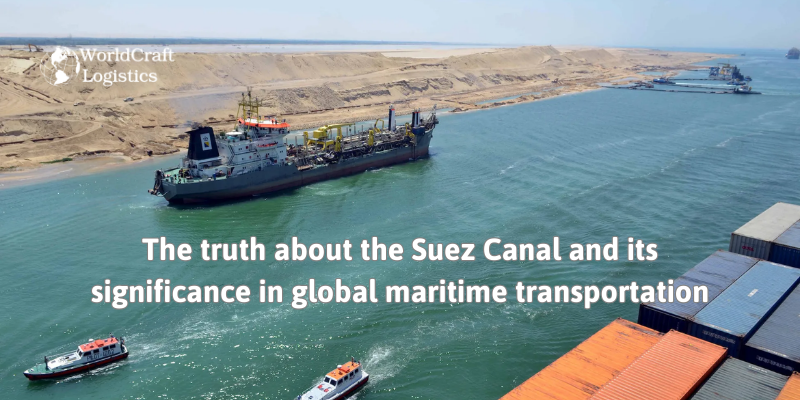The Panama Canal for the global maritime industry shows its importance every time someone mentions it. Gain admiration for this miraculous feat of engineering and human effort. The Panama Canal, one of the greatest engineering and construction wonders on this planet, not only radically changed the map of international trade but also weaved the global economic web through its threads. gold of the sea.
In this article, let Worldcraft Logistics LLC take you on a journey to discover the history and great benefits of the Panama Canal - where giant ships and billions of tons of goods pass through connecting gateways. across continents and the world economy.
1. What is the Panama Canal?

The Panama Canal stands as a remarkable man-made waterway, strategically positioned to bridge the Atlantic and Pacific Oceans, spanning the Isthmus of Panama. This feat of engineering and commerce is under the ownership and management of the Republic of Panama. Extending for a length of approximately 40 miles from one coast to the other, the canal serves as a vital conduit for maritime traffic.
A noteworthy characteristic of the Panama Canal is its ability to facilitate the passage of ships in both directions, reducing the time and distance it takes to traverse the globe. Typically, a voyage through this engineering marvel takes approximately 10 hours, providing a shortcut of immense economic and logistical importance.
It's important to highlight that the Panama Canal adheres to a policy of equal treatment for ships originating from any nation. Regardless of their flag, vessels are granted access while abiding by the established conditions of passage and tolls. This commitment to fairness has played a pivotal role in the canal's global significance, fostering international trade and cooperation on a grand scale.
2. Why is the Panama Canal importance?

The advent of the Panama Canal has significantly transformed this maritime landscape. All transits between the Atlantic and Pacific Oceans have been profoundly streamlined, with voyages shortened by thousands of nautical miles. This invaluable shortcut has not only reduced the duration of voyages but has also greatly enhanced the efficiency of global trade and commerce, making the Panama Canal an essential conduit for international maritime traffic.
Prior to the construction of the Panama Canal, maritime vessels traversing between the eastern and western coasts of the American continents faced the arduous necessity of circumnavigating Cape Horn in South America. This lengthy voyage, extending some 8,000 nautical miles longer than the canal route, demanded an extensive two-month journey.
Those are the reasons that have a positive impact on the development of global sea freight forwarding. If you do not know what sea freight forwarding is, please refer to the article below:
What is sea/ocean freight? Benefits, advantages and cheapest service
3. Explore the history of the Panama Canal
3.1 When was the panama canal built?

The origins of the Panama Canal trace back to the late 19th century when the ambitious efforts of a French construction team faced insurmountable challenges, leading to their eventual failure in the 1880s. In 1904, the United States took up the formidable task of constructing a canal across a 50-mile expanse of the narrow Panama isthmus. This endeavor marked the commencement of one of the most significant engineering projects in history.
One pivotal milestone in the canal's development was the successful eradication of disease-carrying mosquitoes, a major health concern at the time, which facilitated the progress of the construction. Notably, the project's chief engineer, John Stevens, introduced innovative techniques and advocated for a critical shift in the canal's design, transitioning from a sea-level canal to one featuring locks, which significantly expedited the construction process.
Following Stevens, Lieutenant Colonel George Washington Goethals assumed leadership and intensified excavation efforts, particularly in the face of a challenging mountain range. Under his watchful eye, the construction of dams and locks, key components of the canal, progressed swiftly.
The Panama Canal achieved its monumental completion in 1914, forever altering the landscape of global maritime transportation. In 1999, a historic transfer of oversight took place, as the stewardship of this world-renowned waterway transitioned from the United States to the Republic of Panama. This monumental project stands as a testament to human ingenuity, cooperation, and determination, playing a pivotal role in shaping the modern world.
3.2 Who built the Panama Canal?
Noteworthy individuals who played pivotal roles in the construction of the canal include John F. Stevens and George W. Goethals. John F. Stevens was instrumental in introducing innovative techniques and advocating for the transition from a sea-level canal to one featuring locks, which significantly expedited the construction process. George W. Goethals, who succeeded Stevens, oversaw the intensive excavation efforts, particularly in the face of a challenging mountain range. His leadership was instrumental in ensuring the successful construction of dams and locks, critical components of the canal's infrastructure.

3.3 How was the Panama Canal made?
The Panama Canal was constructed through a monumental engineering effort that involved several key steps:
Disease Control: One of the initial challenges was controlling the spread of diseases like malaria and yellow fever, which were prevalent in the region. American doctor William Gorgas led a successful campaign to eliminate disease-carrying mosquitoes, making it safer for workers.
Excavation and Earthmoving: The construction required massive excavation and earthmoving. Engineers and laborers used a variety of tools, including steam shovels, dynamite, and picks, to remove millions of cubic yards of earth and rock.
Locks and Dams: To navigate the varying water levels of the Atlantic and Pacific Oceans, a system of locks and dams was built. These allowed ships to be raised and lowered as they moved through the canal.
Gaillard Cut: A particularly challenging part of the construction was the excavation of the Culebra Cut, now known as the Gaillard Cut. It involved cutting through a mountain range and presented numerous engineering and logistical challenges.
Gatun Lake: A large artificial lake, Gatun Lake, was created to provide a water supply for the canal and maintain the canal's water level.
Building Infrastructure: The construction of the canal required the development of infrastructure such as railroads, roads, and housing for the workforce.
International Collaboration: The project involved international collaboration as the United States worked closely with the Panamanian government, which had gained independence from Colombia, to secure the rights and complete the canal.
The Panama Canal was officially opened in 1914, significantly reducing the time and distance for maritime travel between the Atlantic and Pacific Oceans, and it remains a remarkable engineering achievement and a crucial part of global trade and transportation.

3.4 Panama canal construction costs
Construction of the Panama Canal was a massive and expensive endeavor. The initial French effort, led by Ferdinand de Lesseps, failed due to technical and financial difficulties. Later, the United States took over the project and completed it successfully. Here are some key details regarding costs:
French Effort: The French effort, begun in the 1880s and led by de Lesseps, encountered enormous challenges, including high worker mortality due to disease and geological conditions hard. The project went bankrupt in 1889, and the estimated cost of the French effort was about $287 million.
Building the United States: When the United States took over the project in 1904, it faced significant challenges but implemented better disease control measures and more effective engineering methods. Construction costs for the project in the United States are approximately $375 million. Adjusted for inflation, this amount is equivalent to several billion dollars today.
Human costs: Construction of the Panama Canal consumed a lot of human costs. Thousands of workers, many from the Caribean and local indigenous peoples, worked in challenging conditions. Tens of thousands of workers were involved in the project and an estimated 5,600 workers died during construction, mainly from diseases such as malaria and yellow fever.
The construction of the Panama Canal is not only a "HUGE" financial investment but also a testament to human determination and technical capacity. The economic impact of the canal, both in terms of its costs and the benefits it brings in terms of global trade, has been immeasurable over the years.
4. Types of ships circulate on the Panama Canal

The Panama Canal accommodates a wide range of ship types, solidifying its pivotal role as a global trade artery. These vessels include container ships, bulk carriers, tankers, LNG carriers, Ro-Ro vessels, cruise ships, and various specialized craft. The expansion of the canal, featuring the addition of "New Panamax" locks, enables even larger vessels to navigate this vital waterway, emphasizing its indispensable significance in international maritime commerce.
According to data collected by Worldcraft Logistics, based on information from the Panama Canal Authority (ACP), the majority of traffic through the Panama Canal, constituting 3% of global maritime trade, is predominantly composed of container ships and bulk carriers.
Bulk carriers account for 27.9% of the total maritime transport throughput, followed closely by container ships at 24.2%. Refrigerated cargo vessels, often referred to as "reefer" ships, occupy the third position, representing 8.4% of the traffic. (The most recent consolidated data available, as of late 2022).
Freight demand from Colón on the Atlantic coast and Balboa on the Pacific coast increased. The Panama Canal operates very bustlingly, with the world's largest shipping lines participating to promote goods transportation quickly and save maximum time.
4.1 What ships cannot go through the Panama Canal?
The Panama Canal Authority publishes the following requirements:
- Length: Your vessel's overall length should not exceed 950 feet. There are some exceptions for commercial vessels, and the new set of locks permits ships up to 1,200 feet in length.
- Width: The maximum width requirement is 106 feet. The new locks allow for a width of 161 feet.
- Draft: The permissible draft in Tropical Fresh Water (TWF) is 39.5 feet, as determined by Lake Gatun. The new locks permit a draft of up to 49.9 feet, but draft limitations are often imposed due to rainfall, restricting it to 44 feet.
- Height: The height of your vessel is restricted to 190 feet from the waterline to the highest point of your vessel. This height limit applies to all sets of locks, owing to the Bridge of the Americas.
- Cargo Capacity: The maximum cargo capacity for transit through the canal is approximately 52,500 tonnes, primarily due to draft limitations. However, the new locks allow for a cargo capacity of 120,000 tonnes.
If you are intending to learn information, parameters and cargo types of popular ship types in the maritime industry, do not miss this article: Top 10 types of cargo vessels in the world
4.2 Why is the Panama Canal so narrow for huge ships?

Because it was difficult and expensive to build, and they built it as big as they could. It was fine for ships in 1914. The Titanic would have had 20 feet to spare had it made it that far.
The plan attempted by the French was a sea-level canal like the Suez canal. Just dig a big ditch. But among other problems, the Pacific Ocean is actually more than a foot higher than the Atlantic ocean. Add the effect of the tides, and any sea-level ditch would be a torrent of rushing water.
So the American plan was to use locks, and to raise ships high enough to get through the central mountains. In the middle, a dam was built to create a giant lake instead of digging a ditch, and the water in the lake was used to operate the locks.
So the new locks recycle the water with a ingenious collection of recovery ponds to operate the locks. The new locks are on the right in this satellite image. You can see the three square recovery ponds.
In conclusion, the Panama Canal remains an essential gateway for global maritime trade. Its ever-evolving infrastructure and commitment to adapting to the needs of the shipping industry underscore its significance as a crucial link between the world's major trading partners. Worldcraft Logistics hoped the ongoing enhancements and innovations taking place within the canal are not just a boon to the maritime industry, but they are also a testament to the human spirit's unyielding desire to forge connections and bridge divides.





